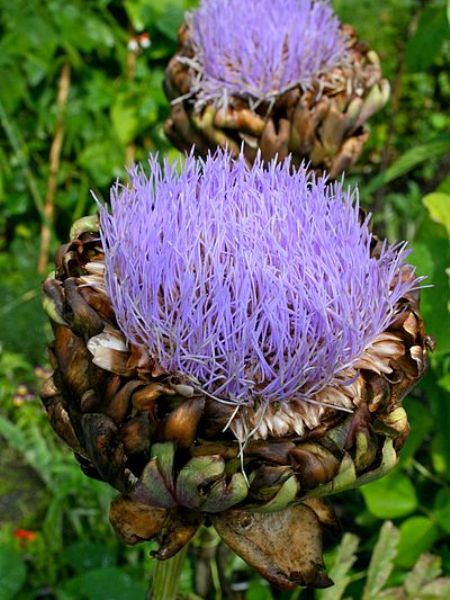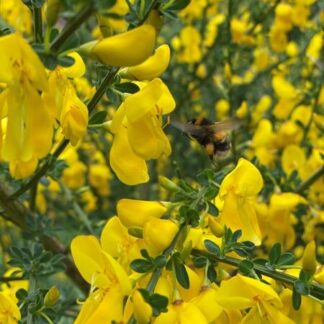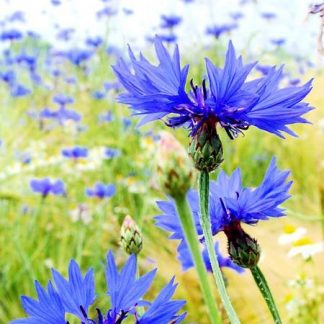Description
Asteraceae (family name)
Forage for pollinators: Produces Nectar and Pollen for Honeybees, Bumblebees both long and short-tongued, Solitary bees and Butterflies. The flowers are pollinated by Honeybees, Bumblebees and Butterflies.
Flowering time: August, September.
Growing information: PERENNIAL VEGETABLE Open pollinated variety growing to 1.5 m (5ft) by 1 m (3ft 3in). Hardy to minus 23ºC. Grow in free-draining soil in full sun. Water well in dry spells and mulch with well-rotted manure. Slugs and snail are very attracted to these plants so our strategy is to take a torch out late at night (pick off all the slugs and snails and drop them in a bucket of water) and they will need to be moved well away or they will return the next night. We feed them to our chickens. The flower buds are harvested just before opening and usually boiled before eating. Some of these and the small buds that are produced on lateral stems can and should be left to flower, and seed saved after pollination. Artichokes have become important as a medicinal herb in recent years following the discovery of cynarin, found in the leaves, which improves liver and gall bladder function and lowers blood cholesterol levels.





